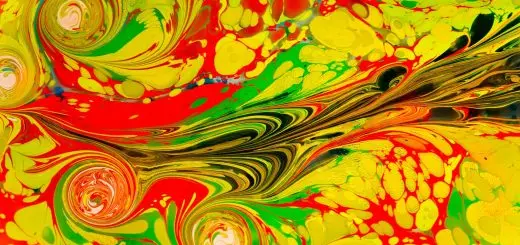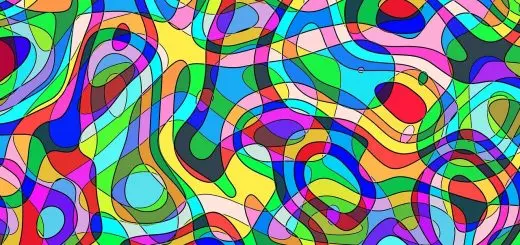The Cylinder Seal of Adda: Artistic Expression in Akkad

Looking for more amazing products? Check out our online store and explore our collection here! Happy shopping!
Before diving in, please note: This post is for informational purposes only. If you’d like to know more about how we approach topics, feel free to check out our friendly Disclaimer Page.
Hey there, amazing readers! 
We’re committed to delivering quality posts, and your support (even just sticking around despite the ads) means everything to us. So, bear with us, and thanks for helping us keep the good vibes rolling. Now, on to the fun stuff!
TRANSLATE BUTTON AT THE END OF THE ARTICLE
The Cylinder Seal of Adda: Artistic Expression in Akkad
Overview
The Cylinder Seal of Adda is a remarkable example of artistic expression in the ancient city of Akkad.
This small but intricate object provides valuable insights into the culture, society, and artistic techniques of the Akkadian Empire.
In this article, we will explore the historical background of Akkad, the significance of cylinder seals in Mesopotamian society, and a detailed analysis of the Cylinder Seal of Adda.
We will also discuss the symbolism, techniques, materials, and artistic style used in its creation, as well as its cultural and social context.
Furthermore, we will compare it to other cylinder seals from Akkad and explore its importance in the broader scope of art history.
Introduction to the Cylinder Seal of Adda
The Cylinder Seal of Adda is a small, cylindrical object made of stone or clay, measuring approximately 2 to 4 centimeters in height.
It features intricate engravings on its surface, depicting various scenes and symbols that hold significant meaning.
These seals were used as a form of identification, as well as a means to authenticate documents and goods.
They were rolled onto wet clay or wax to create a unique impression, serving as a mark of ownership or authority.
Historical Background of Akkad
Akkad was an ancient city-state located in Mesopotamia, present-day Iraq, during the third millennium BCE.
It was the capital of the Akkadian Empire, which was the first known empire in history.
The empire was founded by Sargon of Akkad, who established a centralized government, conquered neighboring city-states, and united them under his rule.
This period marked a significant shift in Mesopotamian history, as Akkadian became the lingua franca and Akkadian culture and influence spread throughout the region.
The Significance of Cylinder Seals in Ancient Mesopotamia
Cylinder seals held immense significance in ancient Mesopotamia, serving both practical and religious purposes.
As practical tools, they were used to authenticate documents, such as contracts, receipts, and legal transactions.
The unique engravings on each seal acted as a signature or seal of approval, ensuring the authenticity and integrity of the document.
From a religious perspective, cylinder seals were seen as magical or divine objects that provided protection and served as a connection between the human and divine realms.
Description and Analysis of the Cylinder Seal of Adda
The Cylinder Seal of Adda depicts a highly detailed scene featuring Adda, a prominent figure in Akkadian mythology, alongside various symbols and motifs.
Adda is shown in a majestic pose, wearing a crown and holding a staff, symbolizing his authority and divine status.
Surrounding him are various animals, such as lions and bulls, which are common motifs in Mesopotamian art and symbolize power and strength.
The intricate engravings and attention to detail showcase the skill and craftsmanship of the artist who created the seal.
Symbolism and Iconography in the Cylinder Seal of Adda
The symbols and iconography in the Cylinder Seal of Adda hold profound meaning and reflect the religious and cultural beliefs of the Akkadian Empire.
Adda, depicted as a divine figure, represents the connection between the mortal and divine realms, embodying the concept of kingship and divine authority.
The presence of animals, such as lions and bulls, symbolizes the power and strength of the ruler.
These animals were often associated with deities and were believed to bestow protection and divine favor upon the ruler.
Techniques and Materials Used in Creating the Cylinder Seal
The creation of the Cylinder Seal of Adda required intricate techniques and the use of specific materials.
The seal was most likely made from a durable stone, such as lapis lazuli or hematite, or from clay.
The artist would have used specialized engraving tools, such as a stylus or chisel, to meticulously carve the design onto the surface of the seal.
The depth and precision of the engravings demonstrate the skill and expertise of the artist.
The seal would then be polished to enhance the visibility and clarity of the design.
Artistic Style and Aesthetics in the Cylinder Seal of Adda
The artistic style of the Cylinder Seal of Adda is representative of the Akkadian art tradition.
The engravings are characterized by their naturalistic and detailed representations of human and animal figures.
The artist employed a combination of frontal and profile views, capturing the distinct features and proportions of each figure.
The use of intricate patterns and textures on the clothing and accessories adds depth and visual interest to the composition.
The overall aesthetic of the seal is one of grandeur and power, befitting its portrayal of a divine ruler.
The Cultural and Social Context of the Cylinder Seal
The Cylinder Seal of Adda provides valuable insights into the cultural and social context of the Akkadian Empire.
The depiction of a divine ruler, surrounded by symbols of power and strength, reflects the importance of divine kingship in Akkadian society.
It highlights the belief in the divine right of rulers and their role as intermediaries between the gods and the people.
The use of cylinder seals as a form of identification and authentication also reveals the administrative and bureaucratic systems in place during this period.
Comparison with Other Cylinder Seals from Akkad
When comparing the Cylinder Seal of Adda with other cylinder seals from Akkad, certain similarities and differences can be observed.
Many cylinder seals from this period feature similar iconography, such as divine figures, animals, and intricate patterns.
However, each seal also possesses unique elements that reflect the individuality and personal style of the artist.
The Cylinder Seal of Adda stands out for its detailed engravings and the prominence of Adda as a central figure, distinguishing it from other seals that may depict different deities or rulers.
Importance of the Cylinder Seal of Adda in Art History
The Cylinder Seal of Adda holds great importance in the field of art history.
It provides valuable evidence of the artistic techniques, materials, and styles employed during the Akkadian Empire.
The seal serves as a testament to the skill and craftsmanship of Akkadian artists, as well as their ability to convey complex narratives and religious beliefs through intricate engravings.
Furthermore, the Cylinder Seal of Adda offers a glimpse into the social and cultural aspects of Akkadian society, shedding light on their beliefs in divine kingship and the use of seals as symbols of authority.
Conclusion: The Artistic Legacy of the Cylinder Seal of Adda
In conclusion, the Cylinder Seal of Adda is a remarkable example of artistic expression in the ancient city of Akkad.
Through its intricate engravings, symbolism, and attention to detail, the seal provides valuable insights into the culture, society, and artistic techniques of the Akkadian Empire.
The depiction of Adda as a divine ruler, surrounded by powerful symbols and animals, reflects the religious and cultural beliefs of the time.
The seal’s significance in the field of art history cannot be overstated, as it offers a glimpse into the artistic legacy of the Akkadian Empire and its impact on future artistic traditions.

The Enlightenment Journey is a remarkable collection of writings authored by a distinguished group of experts in the fields of spirituality, new age, and esoteric knowledge.
This anthology features a diverse assembly of well-experienced authors who bring their profound insights and credible perspectives to the forefront.
Each contributor possesses a wealth of knowledge and wisdom, making them authorities in their respective domains.
Together, they offer readers a transformative journey into the realms of spiritual growth, self-discovery, and esoteric enlightenment.
The Enlightenment Journey is a testament to the collective expertise of these luminaries, providing readers with a rich tapestry of ideas and information to illuminate their spiritual path.
Our Diverse Expertise
While our primary focus is on spirituality and esotericism, we are equally passionate about exploring a wide range of other topics and niches 

To ensure we provide the most accurate and valuable insights, we collaborate with trusted experts in their respective domains 
Our blog originally focused on spirituality and metaphysics, but we’ve since expanded to cover a wide range of niches. Don’t worry—we continue to publish a lot of articles on spirituality! Frequently visit our blog to explore our diverse content and stay tuned for more insightful reads.
Hey there, amazing reader! 
Check out our store here and take a peek at some of our featured products below! Thanks for being awesome!













